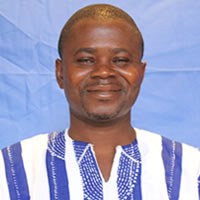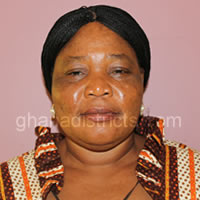VULNERABILITY ANALYSIS
Introduction
Vulnerability may be defined as the probability that livelihood stress will occur. It has been defines as the lack of capacity (of a household) to cope with an adverse shock or a households resilience against a shock. That is the likelihood that a shock will result in a decline in well-being of the household. Exclusion and lack of voice can also determine the extent of a person’s access to resources. Lack of voice and the inability to make recourse to justice can increase a person’s vulnerability to injustice and corruption and thus exclusion.
Vulnerable and Excluded Groups
Groups which have been identified as vulnerable and excluded in the Techiman North District include; children in difficult circumstances (those from low income and broken homes and orphans). These children are likely to suffer from malnutrition or be involved in economic activity at an early age (child labour/street children), adolescent girls (those from low income and broken homes and single mothers as well as commercial sex workers). Other categories include, Persons living with HIV/AIDS (PLHIVA), the aged, persons with disability (PWDs), women and unemployed youth. Subsistence food/vegetable farmers were also identified as vulnerable and excluded.
Types of shock facing households in the District
The Techiman North District as a major agricultural area also dependent on rainfall for production. As a result the major shocks affecting food availability, incomes and wealth accumulation are those that relate mainly to crop production. The economic activities that individuals and household are involved in also determine to a large extent vulnerability to income and asset loss in the District. Three main types of shocks affecting most families in the District relate to the areas of food insecurity, human insecurity and job insecurity. Household also face a wide variety of shocks ranging from natural events to man-made (that is conflicts, policy induced, terms of trade shocks, illness and deaths).
In Tuobodom, the most cited shocks are production related. This may occur as a result of crop failure due to poor rains affecting harvests or pest invasion affecting storage. This type of shock according to the District Poverty Profiling Survey was reported by 65% of households. Price- related shocks rank second. This is reported by about 60% of farmers especially maize and tomato farmers.
Due to the fluctuating prices of agricultural produce like maize and tomatoes and inadequate storage and processing facilities, increased harvest usually end up in glut of produce and low prices. Increase in major food prices also on the contrary, reduced the real income of food farmers. This was partly explained by the fact that farmers tend to sell off their produce immediately after harvest to meet urgent social obligations, when prices are low. Farmers, especially subsistence ones, are forced to buy back the produce during the lean season, when prices are at their highest levels.
Other shocks cited include illness, job loss and disability of income earner, loss of asset due to disease (death of livestock) or bushfire, or theft. Conflicts resulting from chieftaincy disputes and insecurity of land tenure were also cited as shocks. The seasonality in agricultural production and the lack of non-farm income generating opportunities leaves most farmers and labourers without work during periods of the year. For the private sector employees and the self-employed about 30% have gone through periods of inactivity due to ill-health, infrequency in the demand for their services or the seasonal nature of their jobs. At the community level most communities reported of events relating to rainstorms that affect houses including schools and other individual and community’s building as well as flooding during the peak rainfall periods.
Coping Strategies/ Impacts of shocks
The updated District Poverty Mapping Exercise showed that the poor or rural households are more exposed to natural and agricultural-related shocks than the non-poor and urban households. In Techiman most poor households respond to shocks by recourse to self-help coping strategies like selling of assets or livestock and informal insurance mechanisms. The non-poor also use both self-help mechanisms, as well as market-based strategies such as falling on savings and banks loans. Majority of household do not use formal insurance mechanisms.
The extent to which the affected household or individual can gain access to credit, private transfer or public safety nets to help maintain consumption, may determine the type of response. When it is not possible to access any public safety nets or sufficient credit to maintain current consumption, recourse may be made to other strategies that either directly or indirectly reduces assets or further consumption. This situation tends to further worsen the individual or households vulnerability to poverty.
A large number of household are impacted by weather-related shocks. Thus efforts of the District Assembly and communities should be focused on water management projects to reduce the effects of variability of the weather. It is therefore necessary to re-assess the strategy mix to address the vulnerable and excluded in the Assembly’s development agenda, by providing safety nets to protect incomes from falling below unbearable levels.
This may include the provision of a guaranteed minimum price for selected agricultural produce like maize and tomatoes. Current disaster management programmes need to be strengthened and the role of social assistance expanded. Greater collaboration between agencies/organisations for the sector needs to be promoted to enhance effectiveness of assistance. Reliable data on the vulnerable, excluded and disadvantaged persons need to be addressed.
Gender Analysis
Gender refers to roles, responsibilities and relationships that are socially ascribed to men, women, boys and girls. They are determined by many parameters including sex, age ethnicity, religion, caste, physical location and politico-economic status. Gender refers to the sexes, that is, male and females. Cultural perceptions and male aggression against females result in creating gender issues. It has been observed that the complementary role that both sexes should play to ensure rapid and balanced development of all the citizenry is undermined by male domination of all spheres of life. Cultural and social considerations make the female a subordinate to her male counterpart. The female is thus denied equal access to all key segments of life. Gender imbalance in the Techiman North District is real and culminates in a range of gender issues which include;
• Access to credit
Women have very little access to credit. Lack of education coupled with lack of boldness to take risks keep women away from seeking credit facilities from the banks. Besides they lack usual collateral that the banks demand. The mode of inheritance in the municipality is matrimonial. By this system women are generally excluded from holding title to land and other valuable family property. This affects the potential of women to improve their lot in agriculture and thus increase their incomes.
• Decision making
Women in the District shy away from getting themselves involved in decision making. At the party level, no woman has ever emerged as a member of parliament. At the District level of the 28 Assembly Members, 5 of them are women. This represents 15.2% of the total membership. Out of eleven, only four of the 48 elected numbers are women representing 8.3%. Also, of the five (5) Area Councils, none is chaired by a woman, neither is any of the treasurers or secretaries is a woman.
• Employment
About 75% of women in the District are in the informal sector. Of this number, about 45% of women are in agriculture. Unemployment is high among women, low capital generation, lack of employable skills and lack of access to formal employment. The formal sector accounts for less than 20% of women. Men dominate the formal office work which goes with better remuneration and incentives. Women are found in the less attractive areas such as cleaning of offices and secretarial duties. In the public sector women are mainly found in the teaching, health and the public service. Of the twenty-one heads of decentralized departments, none representing 0.00% is woman. All the other women are in the junior ranks. The issue is the same in the police service in the District.
• Health
As a result of poverty and ignorance, many women resort to unorthodox means of seeking health care. Many sick mothers, including pregnant women attend ‘Nakaba’ when sick and are rushed to hospitals and clinics only at clinical point. Women in the District are generally least educated, poorer economically and weaker health-wise. Continued gender inequality in the District will hinder its human development effort if it is not addressed. It is very important for the Techiman North District Assembly to fashion out a policy to integrate women actively in the affairs of the District
Child Labour
Approximately 10.7% of children in age group 7 – 14 years are active in the labour market. Most of these children worked in the agricultural sector. Of this, boys constitute about 56% with 44% as girls. Most of these children served as farmhands working to supplement farm labour or to cater for themselves or support their families’ incomes. This type of child labour is typical of farming communities. Some children were also identified working within the informal economic sectors as house helps, shepherd boys, kayayei, truck pushers, chop bar attendants and in gari processing factories. Others served as drivers’ mates, pito/palm wine sellers, petty hawkers, and ice water sellers. The informal sector had more girls working than boys. This phenomenon is more common in the urban centres especially Tuobodom the commercial centre.
A study revealed that there are more girls involved in child labour, than boys. About 57% of them are children of poor peasant farmers with a significant number of unemployed parentages. Majority of these children are living with single parents. More than half of such children (69%) had never been in school. Attendance by those currently in school was also irregular. The high incidence of Child Labour in the municipality could be attributable to parental neglect and irresponsibility, large family sizes, broken homes and large influx of people into the municipality who come determined to make a living but find the situation difficult and end up engaged in all kinds of work to make a living.
The children are therefore exposed to different kinds of work that could be described as worst form of child labour. Judging by their ages and the conditions under which they live, these children are exposed to many hazards that are injurious to their total development as children. Children constitute the base on which the wealth of the nation depends and there is the need to groom them in an acceptable manner to enable them play their role as the potential human capital for nation building. It is therefore necessary to undertake a careful study to find out the underlying causes of this phenomenon and find appropriate solutions to stem the trend within the District.
Type of disability
The distribution of PWDs by type of locality, disability type and sex. The data shows that about two out of every 100 persons (1.9%) in the Techiman North District has one form of disability or the other. Out of the total number of persons with disability more than two thirds (64.7%) have sight and physical disabilities. All the other forms of disabilities make up 45.3 percent.
The percentage of PWDs living in rural areas is more (2%) than the urban localities (1.9%) which confirm the regional average of PWDs by locality as depicted in Table 6.1 below. The Table 6.1 also shows that there are more males with some form of disabilities (2.0%) than females (1.9%).
Also, more than one-third (35.7%) of the male population in the urban areas have sight disability while 29.6 percent of females in the same locality also have sight disability. In the rural areas, disability is more prevalent among females than males. Females have close to half (37.0%) of the disability population with sight impairment. The same applies to males with 28.5 percent with sight disability.
Figure 6.1 also shows that visual or sight, physical and emotional impairments are the most common type of disability among PWDs in both urban and rural areas in the district even though variations exist between the two locality types. The proportion of PWDs with sight (32.6%) speech (18.0%), physical (34.4%), intellect (17.8%) and emotional (15.4%) impairments are higher in urban areas than rural. However, the percentage of PWDs with hearing (17.2%) and other form (9.8%) of disability is higher in rural than urban areas while there is equal proportion of PWDs with physical challenge in both urban and rural areas.
Population with Disability
Table 6.1 shows the population of disability by type, locality and sex. According to the 2010 population and housing census (PHC) out of a total of 59,068 people in the district, 57,925 representing 98.1 percent are without disability and close to two percent (1.9%) are with disability.
In terms of disability by sex, males with disability consist of 2.0 percent whiles females make up 1.9 percent which is slightly lower than the males.
From Table 6.1 greater proportion (32.5%) of the population have sight disability, followed by physical disability (32.1%), hearing (17.0%), speech (16.0%), intellectual (15.7%) and emotional (13.7%) while a few (9.4 percent have other type of disabilities.
More than one-third (31.8%) of the males population with disability have sight/visual with females constituting (33.3%). The other type of disability which is common among both males and females is physical disability representing 30.4 percent and 33.9 percent respectively. Intellectual disability is the least form of disability among male and females recording 0.3 percent apiece.
Date Created : 11/21/2017 3:33:42 AM






 facebook
facebook twitter
twitter Youtube
Youtube TOLL FREE 0800 430 430
TOLL FREE 0800 430 430 +233 593 831 280
+233 593 831 280 GPS: GE-231-4383
GPS: GE-231-4383 info@ghanadistricts.com
info@ghanadistricts.com Box GP1044, Accra, Ghana
Box GP1044, Accra, Ghana